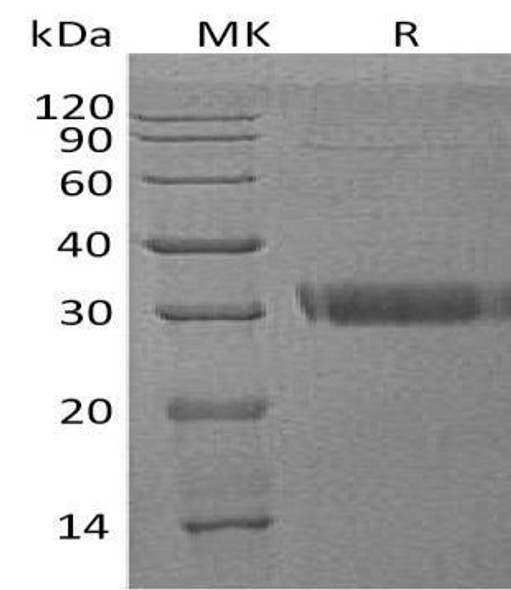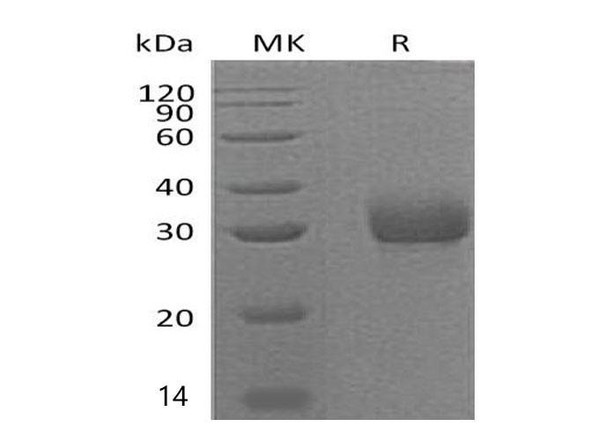Description
Adipoq Antibody (PACO32520)
The AdipoQ Antibody (PAC032520) is a high-quality polyclonal antibody specifically designed for research involving Adiponectin (AdipoQ), a protein involved in regulating metabolism and insulin sensitivity. This antibody, produced in rabbits, is highly reactive with human samples and has been validated for use in applications such as Western blotting.Adiponectin is a protein hormone that plays a crucial role in regulating glucose levels and fatty acid breakdown in the body. Dysregulation of AdipoQ has been linked to conditions such as obesity, type 2 diabetes, and cardiovascular disease.
By targeting Adiponectin with this antibody, researchers can study its expression levels and function in various tissues and cell types.The AdipoQ Antibody is a valuable tool for studies in metabolic disorders, endocrinology, and obesity research. Its specificity and sensitivity make it ideal for detecting Adiponectin in samples, allowing for detailed analysis and insight into the role of this important protein in health and disease.
| Antibody Name: | Adipoq Antibody (PACO32520) |
| Antibody SKU: | PACO32520 |
| Size: | 50ug |
| Host Species: | Rabbit |
| Tested Applications: | ELISA |
| Recommended Dilutions: | |
| Species Reactivity: | Mouse |
| Immunogen: | Recombinant Mouse Adiponectin protein (18-247AA) |
| Form: | Liquid |
| Storage Buffer: | Preservative: 0.03% Proclin 300 Constituents: 50% Glycerol, 0.01M PBS, PH 7.4 |
| Purification Method: | >95%, Protein G purified |
| Clonality: | Polyclonal |
| Isotype: | IgG |
| Conjugate: | Non-conjugated |
| Background: | Important adipokine involved in the control of fat metabolism and insulin sensitivity, with direct anti-diabetic, anti-atherogenic and anti-inflammatory activities. Stimulates AMPK phosphorylation and activation in the liver and the skeletal muscle, enhancing glucose utilization and fatty-acid, combustion. Antagonizes TNF-α by negatively regulating its expression in various tissues such as liver and macrophages, and also by counteracting its effects. Inhibits endothelial NF-kappa-B signaling through a cAMP-dependent pathway. May play a role in cell growth, angiogenesis and tissue remodeling by binding and sequestering various growth factors with distinct binding affinities, depending on the type of complex, LMW, MMW or HMW. |
| Synonyms: | Adiponectin (30 kDa adipocyte complement-related protein) (Adipocyte complement-related 30 kDa protein) (ACRP30) (Adipocyte, C1q and collagen domain-containing protein) (Adipocyte-specific protein AdipoQ), Adipoq, Acdc Acrp30 Apm1 |
| UniProt Protein Function: | adiponectin: Important adipokine involved in the control of fat metabolism and insulin sensitivity, with direct anti-diabetic, anti-atherogenic and anti-inflammatory activities. Stimulates AMPK phosphorylation and activation in the liver and the skeletal muscle, enhancing glucose utilization and fatty-acid combustion. Antagonizes TNF-alpha by negatively regulating its expression in various tissues such as liver and macrophages, and also by counteracting its effects. Inhibits endothelial NF-kappa-B signaling through a cAMP-dependent pathway. May play a role in cell growth, angiogenesis and tissue remodeling by binding and sequestering various growth factors with distinct binding affinities, depending on the type of complex, LMW, MMW or HMW. Homomultimer. Forms trimers, hexamers and 12- to 18-mers. The trimers (low molecular weight complexes / LMW) are assembled via non-covalent interactions of the collagen-like domains in a triple helix and hydrophobic interactions within the globular C1q domain. Several trimers can associate to form disulfide-linked hexamers (middle molecular weight complexes / MMW) and larger complexes (higher molecular weight / HMW). The HMW-complex assembly may rely aditionally on lysine hydroxylation and glycosylation. LMW, MMW and HMW complexes bind to HBEGF, MMW and HMW complexes bind to PDGFB, and HMW complex binds to FGF2. Interacts with CTRP9A via the C1q domain (heterotrimeric complex). Synthesized exclusively by adipocytes and secreted into plasma. |
| UniProt Protein Details: | Protein type:Secreted, signal peptide; Endoplasmic reticulum; Hormone; Secreted Cellular Component: extracellular space; cell surface; collagen; protein complex; endoplasmic reticulum; extracellular region Molecular Function:identical protein binding; protein binding; protein homodimerization activity; hormone activity; sialic acid binding; receptor binding Biological Process: negative regulation of MAP kinase activity; negative regulation of phagocytosis; negative regulation of smooth muscle cell proliferation; negative regulation of hormone secretion; positive regulation of cellular protein metabolic process; membrane hyperpolarization; negative regulation of smooth muscle cell migration; glucose homeostasis; negative regulation of granulocyte differentiation; positive regulation of interleukin-8 production; positive regulation of glucose import; negative regulation of gluconeogenesis; response to glucose stimulus; adiponectin-mediated signaling pathway; negative regulation of protein amino acid autophosphorylation; negative regulation of blood pressure; negative regulation of cell migration; protein homooligomerization; positive regulation of I-kappaB kinase/NF-kappaB cascade; negative regulation of heterotypic cell-cell adhesion; positive regulation of signal transduction; glucose metabolic process; negative regulation of tumor necrosis factor production; negative regulation of I-kappaB kinase/NF-kappaB cascade; negative regulation of fat cell differentiation; negative regulation of synaptic transmission; membrane depolarization; positive regulation of peptidyl-tyrosine phosphorylation; positive regulation of fatty acid metabolic process; fatty acid beta-oxidation; negative regulation of macrophage differentiation; cellular response to insulin stimulus; negative regulation of low-density lipoprotein receptor biosynthetic process; positive regulation of protein kinase activity; negative regulation of inflammatory response; brown fat cell differentiation; fatty acid oxidation; positive regulation of protein amino acid phosphorylation; negative regulation of transcription, DNA-dependent; positive regulation of myeloid cell apoptosis; positive regulation of blood pressure |
| UniProt Code: | Q60994 |
| NCBI GenInfo Identifier: | 408359957 |
| NCBI Gene ID: | 11450 |
| NCBI Accession: | Q60994.2 |
| UniProt Secondary Accession: | Q60994,Q62400, Q6GTX4, Q9DC68, |
| UniProt Related Accession: | Q60994 |
| Molecular Weight: | 26,809 Da |
| NCBI Full Name: | Adiponectin |
| NCBI Synonym Full Names: | adiponectin, C1Q and collagen domain containing |
| NCBI Official Symbol: | Adipoq |
| NCBI Official Synonym Symbols: | APN; Acdc; apM1; 30kDa; GBP28; adipo; Acrp30 |
| NCBI Protein Information: | adiponectin; adipocyte-specific protein AdipoQ; adipocyte complement related protein; 30 kDa adipocyte complement-related protein; adipocyte complement-related 30 kDa protein; adipocyte, C1Q and collagen domain containing; adipocyte, C1q and collagen domain-containing protein |
| UniProt Protein Name: | Adiponectin |
| UniProt Synonym Protein Names: | 30 kDa adipocyte complement-related protein; Adipocyte complement-related 30 kDa protein; ACRP30; Adipocyte, C1q and collagen domain-containing protein; Adipocyte-specific protein AdipoQ |
| Protein Family: | Adiponectin |
| UniProt Gene Name: | Adipoq |
| UniProt Entry Name: | ADIPO_MOUSE |










